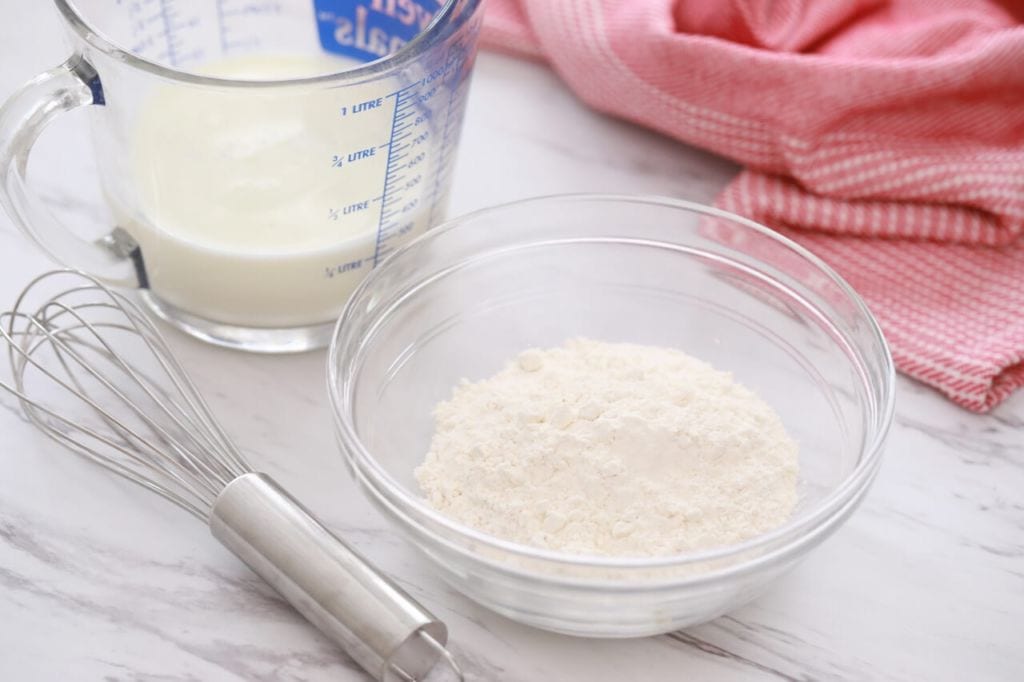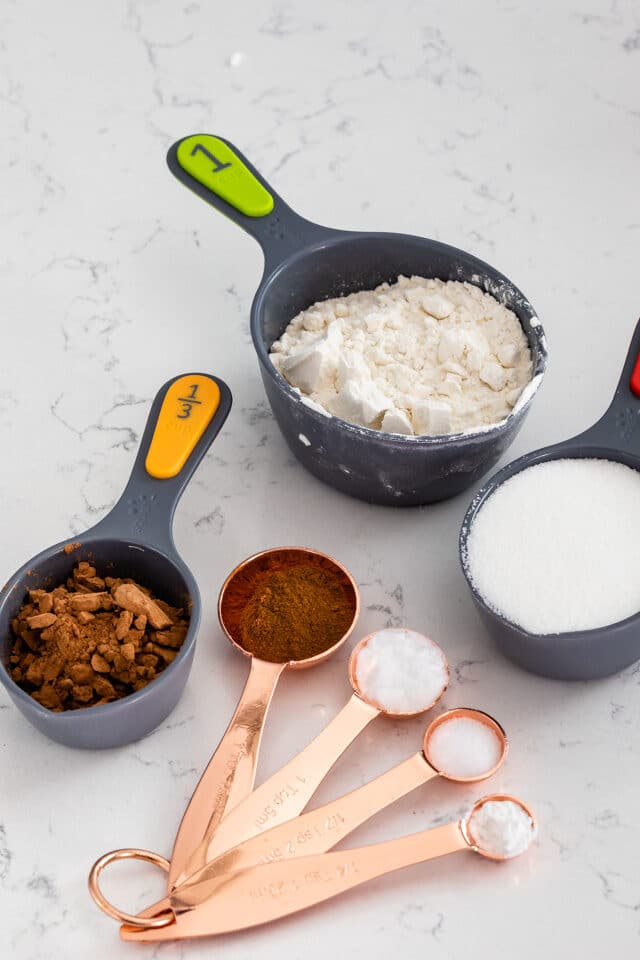Saying something: THE IMPORTANCE OF MEASURING INGREDIENTS IN BAKING

Preparing is a science and it requires all the exactness you would expect when doing a synthetic trial. Your fixing estimations must be exact to get the concoction responses you need and to score that ideal, reliable outcome inevitably.
SO YOU WANT TO BE A BAKER...
It's as simple as tidying off your most important kitchen device and no, it's not your extravagant stand blender. Your most kitchen weighing cup important kitchen frill when heating is... the kitchen scale! Spot a bowl on it and gauge your fixings and you're en route.
From these discussions, I've understood that it isn't so much that they can't heat, it's that they don't generally like adhering to the plans they're preparing from, not to mention measure out their fixings! (does this sound like it could be you?)
They fall into the negative behavior patterns of guesstimating sums and eyeballing. Eyeballing may work when you're making soup, however in case you're making a cluster of treats, exactness truly is the way to progress and a reliable outcome, starting with one clump then onto the next. Also, that is the place your kitchen scale pays a significant job!
Investigate the photograph for Bacon bourbon apple treats underneath. Every one of the three treats utilize similar fixings yet look how changing the measure of margarine and eggs changed the shape and structure of the treat!
The Importance of Measuring Baking Ingredients | Food Bloggers of Canada
Only 58 grams a greater amount of spread and additionally an additional egg have a significant effect. Alright, fine, every one of these treats contained bacon so they were all very scrumptious and scarfed in a flash, yet at the same time.
For what reason IS MEASURING INGREDIENTS ACCURATELY SO IMPORTANT?
Heating IS a science. It depends on synthetic responses occurring between your fixings. Sadly, this implies you can't just stir up a spot of this, a touch of that, a bunch of flour and a couple of eggs, and hope to get the ideal chewy chocolate chip treat!
Preparing doesn't work that way (except if you have forever and a day of experience making your preferred cake formula). For instance, on the off chance that you include a lot of margarine or insufficient flour, your treats will spread. On the off chance that you include a lot of preparing powder, your cakes will taste interesting, and will rise quickly and afterward sink in the center. Keep in mind science class when you were in school? You had a wide range of devices to ensure you had exact estimations for your tests. Things probably won't have gone so well for you in the event that you got your sulphuric corrosive estimations mistaken!
In the photograph underneath, every one of the cakes contain a similar essential fixings, yet they are plainly not the equivalent. The fundamental contrast between them lies in the sums and proportions of fixings utilized! (Yellow margarine cake formula)
The Importance of Measuring Baking Ingredients | Food Bloggers of Canada
Every one of these cakes contain a similar fundamental fixings, yet they are plainly not the equivalent. The primary contrast between them lies in the sums and proportions of fixings utilized.
DRY MEASURING CUPS VS LIQUID MEASURING CUPS: THERE IS A DIFFERENCE.

Is there a contrast between dry estimating cups and fluid estimating cups? Completely! They're various apparatuses for various employments.
Would you be able to pull off utilizing only one kind of estimating cup set? When absolutely necessary - for specific things like a standard chocolate chip treat you unquestionably can and still have an extraordinary outcome. For progressively finicky prepared merchandise estimating appropriately can be significant and the outcomes can be very unforgiving in the event that you mess up!
DRY MEASURING CUPS
Dry estimating cups are made to be filled to the edge with a dry fixing (like flour), and afterward leveled. Without a doubt, you could quantify some milk in a dry estimating cup, however filling it to the edge and moving the fluid to your blending bowl is clumsy most definitely, and kitchen weighing cup you'll presumably spill a little en route. This is when fluid estimating cups proved to be useful.
Prescribed Dry Measuring Cups: U-Taste Stainless Steel Set of 15 Dry Measuring Cups and Spoons
Fluid MEASURING CUPS
Fluid estimating cups are generally made with a pouring spout and graduated (with volume marks) for simple and clear estimating of fluids. The volume checks on fluid estimating cups consistently fall well underneath the pouring spout, making it simpler to move fluids from cup to bowl. It likewise implies that estimating a dry fixing, similar to flour, isn't so natural in a fluid estimating cup since you can't level the substance.
Prescribed Liquid Measuring Cups: OXO Good Grips 3 Piece Angled Measuring Cup Set

Thus, utilize dry estimating cups for dry fixings (flour, sugar, and so on.), and utilize fluid estimating cups for fluid fixings (milk, water, oil).
Even better, MEASURE YOUR BAKING INGREDIENTS ON A SCALE
The Importance of Measuring Baking Ingredients | Food Bloggers of Canada
The truth of the matter is that how you fill your dry estimating cup with sugar or flour will influence the amount of that fixing you are including into your blending bowl, and in this manner how your heated products turn out.
RELATED: REESE Peanut Butter Chocolate Spread S'mores Pie
In a perfect world, you spoon flour and starch fixings into the estimating cup before leveling it off.
Then again, with dark colored sugar, you should pack it into the cup measurer like you are preparing to construct a sand château. A few people probably won't know to pack the darker sugar into the estimating cup!
Possibly I like to just scoop and level flour, while you lighten up the flour before scooping and leveling.
In all cases, the manner in which you fill your estimating cup is a key advance that makes your treats unique in relation to mine, regardless of whether we're utilizing a similar formula!
The best way to maintain a strategic distance from inconsistencies is to gauge your fixings. It might appear to be an additional progression or a torment from the start, however soon you will arrive at understand that you wind up dirtying less dishes, making to a lesser degree a wreck and, all the more critically, your treat and cake plans will yield better, progressively predictable outcomes. I basically weigh everything on my scale. I even utilize my scale to equitably gap cake hitter among my cake skillet when I'm preparing layer cakes.
YOU HAVE A KITCHEN SCALE BUT DON'T KNOW HOW TO USE IT
You are not the only one! Furthermore, on the off chance that it makes you feel any better, I have seen college prepared scientific experts flummoxed by a scale. I kid you not! Indeed, numerous colleges currently offer science understudies additional lab sessions on the most proficient method to gauge utilizing a scale or a graduated chamber (which is fundamentally a similar thought as a fluid estimating cup).
The most effective method to USE YOUR KITCHEN SCALE
In the event that you have an advanced scale, start by putting a bowl on the stage and "tare" or "zero" it to represent the heaviness of the bowl. At that point measure your fixings into that bowl.
In case you're utilizing a mechanical (dial) scale, place the bowl on the scale and afterward ensure that the hand lies at zero preceding you start weighing into the bowl (there ought to be a dial at the back of the scale that enables you to modify the situation of the hand).
FOR THE LOVE OF CAKE, IF YOUR SCALE HAS A BUTTON FOR MILLILITERS, DO NOT USE IT!
Here's the place I release my internal scientific expert on you. The milliliter button on your scale is making the suspicion that the fluids you are gauging all have a similar thickness, explicitly a thickness of 1 gram for each 1 milliliter.
Fundamentally, your scale is expecting that all fluids have a similar thickness as water.
Lamentably, this simply isn't valid. A few fluids, similar to oils, have a lower thickness than water, and some have a higher thickness than water (like corn syrup). So if you don't mind for the love of cake and everything sweet and flavorful, overlook the milliliter button on your scale.
KEY TAKE-AWAY WHEN IT COMES TO MEASURING INGREDIENTS
Indeed, preparing may require some additional consideration in the estimating division, yet it is well justified, despite all the trouble! Careful discipline brings about promising results and think about all the yummy cakes and treats that will originate from your undertakings!
Suggested SCALE FOR MEASURING INGREDIENTS
I have evaluated a couple of advanced scales (and one mechanical) throughout the most recent couple of years, and my preferred one by a long shot is this one: OXO Good Grips Food Scale with haul out show. The catches are the least demanding to press and it handles both measurement and magnificent measures. This scale doesn't highlight an illogical milliliter catch, and it can deal with negative numbers (which has weighing by effect fundamentally simpler). The hardened steel top is removable so you can clean it without harming the scale. I've had my OXO scale for a considerable length of time and I sincerely love it.